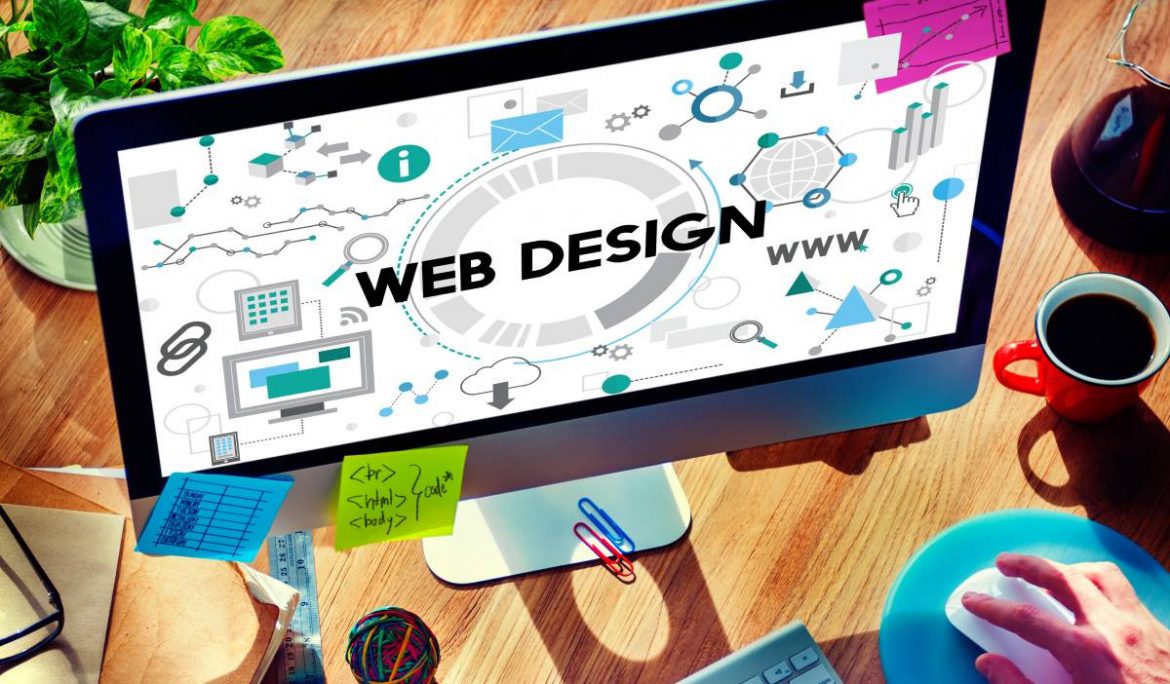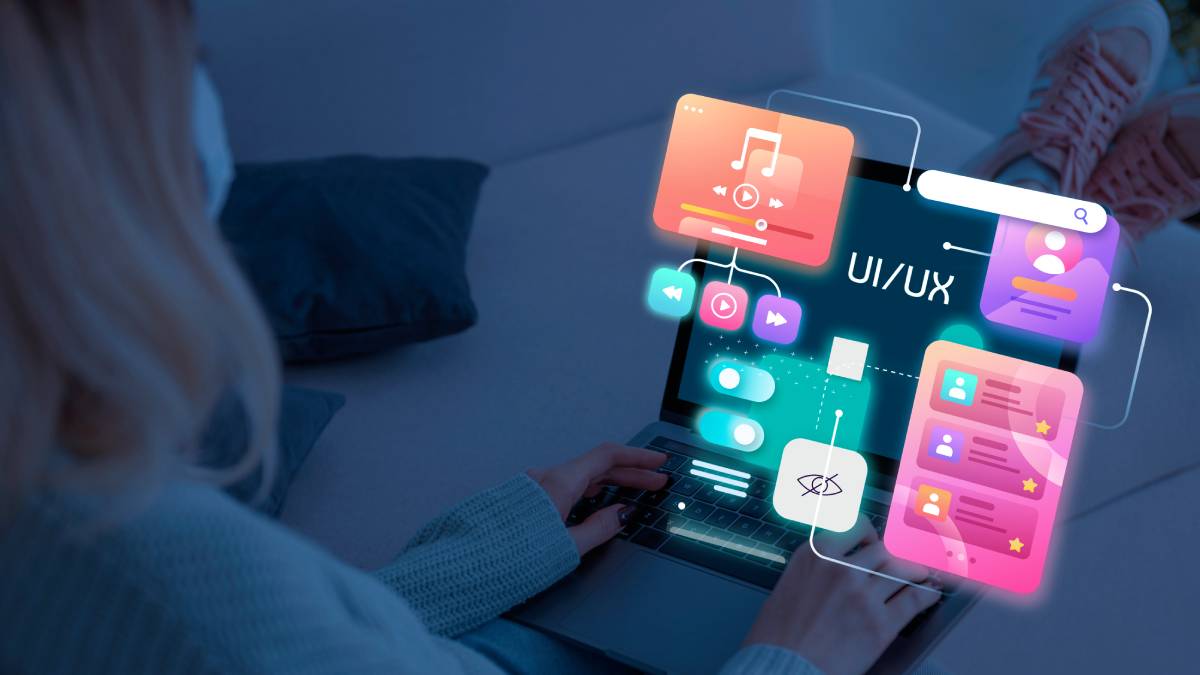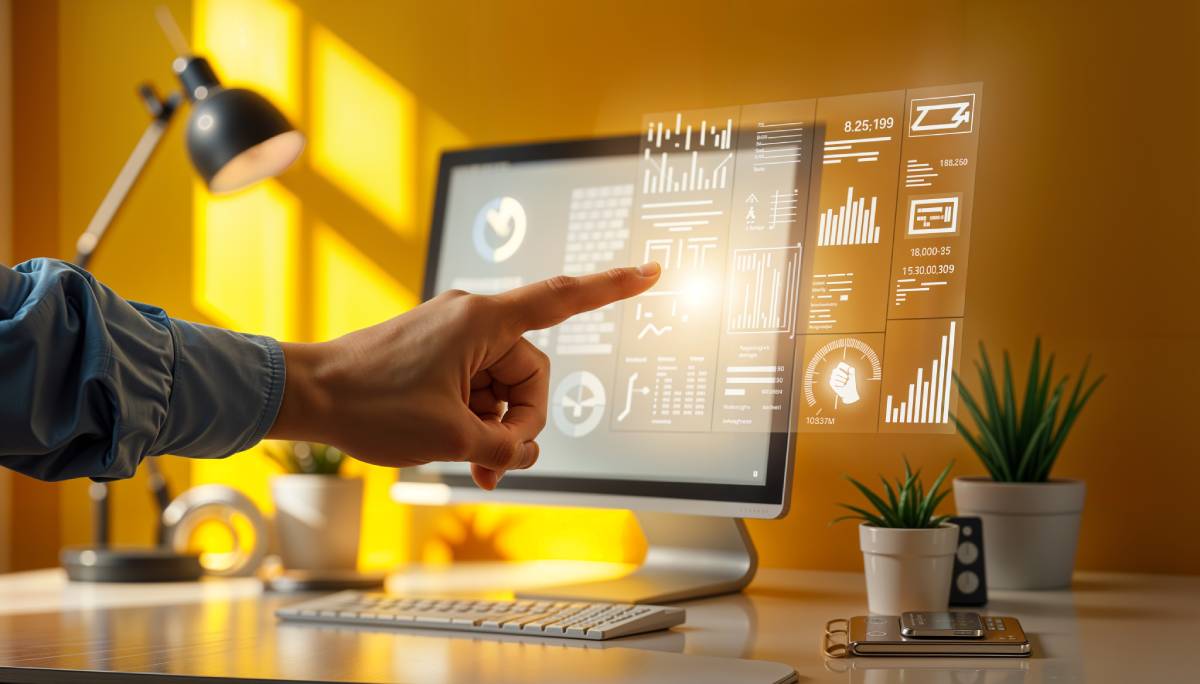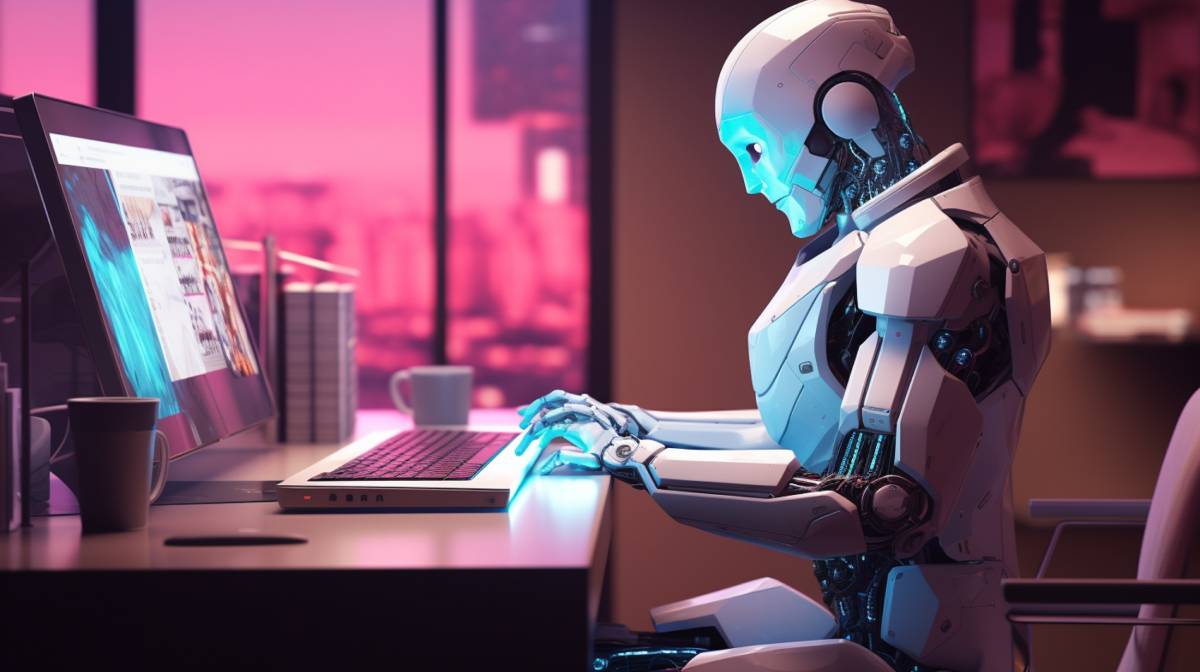
Introduction: The Evolution Toward Smarter, Immersive Web Design
Web design has always reflected shifts in technology and user expectations. In the early days of the internet, websites were static layouts, simple HTML pages with text and basic images. They were functional but offered little in terms of design flexibility or interactivity.
Fast forward to the 2010s, and responsive web design trends 2025 transformed how users interacted with the web. Instead of designing for desktops only, developers began creating flexible grids and layouts that adapted to tablets and smartphones. This shift was essential as mobile use exploded, especially in markets like India, where mobile-first browsing quickly became the norm.
Now, in 2025, we are entering a new era. The web is no longer just about delivering information; it’s about creating immersive, personalized, and interactive digital experiences. With the rise of AI web design, AR web design, and 3D web UX trends, the line between apps, websites, and real-world experiences is blurring.
For businesses in Mumbai, a city that thrives on competition, innovation, and fast-moving consumer behavior, embracing modern web design trends 2025 isn’t just optional. It’s essential for staying relevant, competitive, and memorable.
In this guide, we’ll break down:
- The historical context of web design.
- How AI web design creates smarter, user-focused websites.
- How AR web design enables immersive interactions.
- The rise of 3D web UX trends shaping digital storytelling.
- Key considerations include inclusive design, performance, and mobile-first strategies.
- Real-world Mumbai case studies showing transformation.
- Why partnering with a web design company in Mumbai ensures you stay ahead in this rapidly evolving landscape.
The Historical Context – From Static Layouts to Responsive Web Design
To understand where we are now, it helps to look at how far web design has come.
1990s – The Era of Static Layouts
Websites in the 90s were built using simple HTML. There was no CSS styling, no interactivity, and no mobile considerations. Every element had to be hard-coded, and the design was more about structure than aesthetics.
Key features of this era:
- Text-heavy pages.
- Minimal images, mostly low-resolution.
- Basic navigation menus.
- No adaptability, what you saw on the desktop was fixed.
Static sites were revolutionary for their time, but quickly became outdated as user expectations evolved.
2000s – The Rise of Dynamic Web Pages
With the introduction of JavaScript, CSS, and server-side scripting (PHP, ASP, etc.), websites became more dynamic. Instead of static content, businesses could now update content easily through CMS platforms like WordPress.
Key features of this era:
- Dynamic content and interactive forms.
- Database-driven websites.
- Early e-commerce platforms.
- Flash animations (popular but heavy and not SEO-friendly).
2010s – Responsive Web Design Becomes Standard
With the rise of smartphones and tablets, responsive web design became the norm. Google even introduced mobile-first indexing, making mobile optimization a ranking factor.
Responsive web design trends 2025 from this era included:
- Fluid grids and flexible layouts.
- CSS media queries for screen-size adaptation.
- Optimized images for faster mobile performance.
- User-friendly navigation (hamburger menus).
This shift was crucial for Mumbai’s growing digital economy, where mobile-first consumers demanded faster, more accessible websites.
2020s – Beyond Responsive: Immersive & Intelligent Design
By the early 2020s, businesses started moving beyond simple responsive layouts to create engaging digital experiences. Key elements included:
- AI-driven personalization (custom recommendations, predictive design).
- AR-powered interactivity (try-on features, immersive product visualization).
- 3D UX elements (animations, product showcases).
- Voice search optimization (aligning with voice assistants).
- Sustainability in design (lightweight sites reducing energy consumption).
This sets the stage for modern web design trends 2025, where AI and AR web design redefine what it means to have a “website.”
AI – Smarter Websites for Mumbai Businesses
In 2025, websites are no longer static digital brochures. With AI web design, businesses can build adaptive, intelligent, and hyper-personalized websites that learn from users and evolve in real time. For Mumbai businesses, where competition is fierce and customers are tech-savvy, this transformation is crucial.
Why AI Web Design Matters in 2025
AI is now at the core of modern web experiences:
- It analyzes user behavior to deliver personalized content.
- It automates customer support through chatbots and assistants.
- It enhances UI/UX by predicting user actions and reducing friction.
For businesses in Mumbai, whether it’s e-commerce, real estate, hospitality, or healthcare, AI helps meet rising user expectations. Customers now expect fast, smart, and seamless interactions.
1. Hyper-Personalized E-commerce Experiences
Mumbai’s booming e-commerce market thrives on customer trust and repeat purchases. AI plays a huge role by delivering:
- Personalized product recommendations based on browsing history and purchase behavior.
- Dynamic pricing models that adjust according to demand, location, or user profile.
- AI-driven search that understands intent (“blue sneakers under ₹3000”).
Example: A Mumbai-based online fashion retailer using AI-powered recommendation engines can boost conversion rates by 30% and average order value by 20%.
2. Intelligent Customer Support
In a city that never sleeps, 24/7 support is vital. AI-powered customer support chatbots are increasingly popular across Mumbai’s real estate, hospitality, and healthcare industries.
These chatbots can:
- Handle FAQs instantly.
- Escalate complex issues to human agents.
- Provide multilingual support (English, Hindi, Marathi).
- Reduce support costs by 40–60%.
Example: A Mumbai hotel using an AI chatbot can instantly answer booking queries, recommend rooms, and even upsell services, improving both customer satisfaction and revenue.
3. Smarter UI/UX with Predictive AI
AI goes beyond content; it shapes how websites are designed and navigated.
- Predicts next actions (like filling forms or clicking checkout).
- Suggests shortcuts for faster navigation.
- Adapts layouts for better usability.
This leads to reduced bounce rates and higher engagement, critical metrics for businesses aiming to rank high in Google’s Core Web Vitals benchmarks.
Comparison Table: Traditional vs. AI Web Design
| Feature | Traditional Web Design | AI Web Design (2025) |
| Content Delivery | Static for all users | Personalized per user |
| Customer Support | Human-only, limited | 24/7 AI chatbots + human escalation |
| UX Design | Manual testing & updates | Predictive AI-driven optimization |
| Search | Keyword-based | Intent-based, natural language |
| Business ROI | Slow improvement | Faster, data-backed growth |
How Ideamagix Uses AI Web Design in Mumbai
At Ideamagix, we implement AI web design trends to help businesses in Mumbai stand out:
- AI-powered chatbots integrated with CRM systems.
- Predictive search and recommendation engines for e-commerce.
- Behavior analytics to personalize homepages, landing pages, and checkout flows.
- Smart A/B testing tools that auto-adjust based on performance.

AR – Immersive Experiences That Captivate
If AI web design makes websites smarter, AR web design makes them more engaging and interactive. In 2025, 3D web UX trends and AR integrations are no longer futuristic; they are becoming mainstream.
For Mumbai businesses, AR provides a unique competitive edge: it helps customers visualize products, engage with brands, and make purchase decisions faster.
1. Virtual Product Try-Ons
E-commerce brands in Mumbai’s fashion, jewelry, and eyewear industries can let users “try before they buy” using AR.
- Jewelry shops allow virtual try-ons of rings or necklaces.
- Fashion retailers enable AR fitting rooms.
- Eyewear brands let customers preview glasses on their faces in real time.
Impact: This reduces returns by 25% and increases buyer confidence, critical for high-value purchases.
2. Immersive Product Showcases
For furniture, interior design, and home decor companies in Mumbai, AR can:
- Project 3D models of furniture into a user’s home.
- Help visualize color, size, and placement before purchase.
- Provide interactive catalogs instead of static images.
Example: A furniture brand in Lower Parel implemented AR in its online store. Customers could place 3D models of sofas in their living rooms, leading to a 40% increase in sales conversions.
3. Interactive Storytelling
Mumbai’s tourism, arts, and culture industries are also adopting AR web design to create immersive experiences.
- Museums offering AR-based guided tours.
- Tourism websites allow users to explore monuments in 3D before visiting.
- Event organizers are using AR to tell brand stories in interactive formats.
This strengthens engagement and brand loyalty by making digital experiences memorable.
Mumbai Case Study: AR for Retail
Client: A luxury jewelry retailer in South Mumbai.
Challenge: Customers are hesitant to buy high-value jewelry online.
Solution: Ideamagix built an AR try-on feature where customers could use their smartphone camera to virtually try necklaces, earrings, and rings.
Results (within 6 months):
- 30% increase in online conversions.
- Reduced product returns by 20%.
- Boosted customer confidence, leading to repeat purchases.
Comparison Table: AI vs. AR in Modern Web Design
| Feature | AI Web Design | AR Web Design |
| Core Purpose | Personalization & smart decisions | Immersive, interactive experiences |
| Example Use Case | Predictive product recommendations | Virtual try-ons for jewelry/fashion |
| ROI Impact | Higher conversions, reduced bounce | Lower returns, faster sales cycle |
| Mumbai Example | AI chatbots for real estate | AR try-ons for luxury jewelry |
Why AR Web Design Matters for Mumbai Businesses
- Competitive advantage in crowded industries like fashion, real estate, and furniture.
- Improved decision-making by helping customers visualize purchases.
- Future-proofing against younger, tech-savvy audiences who expect immersive digital experiences.
The Road Ahead What Else Is Shaping Web Design in 2025
Web design in 2025 is not just about AI web design and AR web design. The industry is shifting toward ethical practices, inclusivity, and performance-first design, while adopting 3D web UX trends to create seamless, futuristic digital experiences.
1. Ethical AI and Inclusive Design
As AI web design becomes more powerful, businesses must ensure their websites respect user privacy and accessibility.
Ethical AI:
- Transparency in how recommendations are generated.
- Clear consent for personalization.
- No “dark patterns” that manipulate users.
Inclusive Design:
- WCAG 2.2 compliance for accessibility.
- ARIA roles to support screen readers.
- Multilingual support (English, Hindi, Marathi for Mumbai audiences).
Mockup Idea: Screenshot of a website with AI-based recommendations and an “explain why” button to build trust.
2. Performance & Mobile-First Design
Despite advanced features, websites must still be fast and mobile-optimized.
- Google now evaluates Core Web Vitals more strictly.
- Mumbai users are primarily mobile-first, and 75% of internet traffic comes from smartphones.
- Techniques like lazy loading, image compression, and server-side rendering are essential.
Mockup Idea: Side-by-side visual of a slow-loading site vs. an optimized, mobile-first layout.
3. AI + AR Integration for Personalized 3D Experiences
The fusion of AI and AR web design is the future of 3D web UX trends.
- AI analyzes user behavior → AR adapts the experience.
- Example: An AI-powered virtual showroom that rearranges products based on what a customer browses.
- Personalized 3D journeys where two users visiting the same site see different layouts based on interests.
Mockup Idea: A 3D furniture store webpage where one user sees “sofas” while another sees “tables,” powered by AI personalization.
4. Case Study: Before & After Modern Web Design
Client: A mid-sized Mumbai interior design studio.
Challenge: Website had static images, high bounce rates, and slow loading times.
Solution by Ideamagix:
- Introduced 3D AR product placement so users could see furniture in their homes.
- Added AI-powered recommendations to suggest styles based on browsing.
- Optimized site speed with Next.js and lazy loading images.
Results (within 4 months):
- Bounce rate dropped by 42%.
- Time on site increased from 1.2 minutes to 4.5 minutes.
- Conversion rate improved by 65%.
Visual Idea: A before-and-after split screen:
- Left: Old static homepage (flat, slow).
- Right: New AR + AI-powered site with sleek animations.
Why These Trends Matter for Mumbai Businesses
- Local customers are tech-savvy and mobile-first.
- E-commerce and real estate sectors are rapidly adopting 3D web UX trends to stand out.
- Businesses that don’t adopt AI and AR web design risk falling behind competitors by 2026.
How a Mumbai Web Development Partner Helps
Adopting modern web design trends 2025 is not just about aesthetics. It’s about AI-driven personalization, AR web design, and responsive performance that directly impact conversions and customer trust. For many businesses, especially in Mumbai’s competitive market, having the right web design company in Mumbai is the difference between staying relevant and getting left behind.
Why Partner with a Local Web Design Agency in Mumbai?
1.Understanding Local Audiences
- Mumbai users browse differently from Western markets.
- Local languages (Hindi, Marathi, Gujarati) matter in responsive web design trends 2025.
- Local design cues (festive campaigns, cultural imagery) increase trust.
2. Access to Emerging Tech (AI + AR)
- Agencies like Ideamagix already implement AI web design for personalization.
- Expertise in AR web design helps e-commerce, real estate, and lifestyle brands showcase products in 3D.
- Proven track record with 3D web UX trends across industries.
3. Full-Stack Expertise
- UI/UX research: Identifying user journeys for Mumbai audiences.
- Technology stack: React, Next.js, Flutter Web, Three.js for 3D.
- Optimization: Speed, SEO, accessibility, and Core Web Vitals compliance.
Step-by-Step Checklist: How to Get Started with Modern Web Design in 2025
Here’s a quick action plan for businesses in Mumbai:
1.Audit Your Current Website
Check load times, bounce rates, and mobile responsiveness.
Tools: Google PageSpeed Insights, GTmetrix, Lighthouse.
2. Define Your Future-Ready Features
- Need AI personalization? → Prioritize AI integration.
- Want immersive shopping? → Invest in AR web design.
- Competing in luxury/e-commerce? → Explore 3D web UX trends.
3. Choose the Right Web Design Partner
- Look for a responsive website design company in Mumbai with case studies.
- Check if they offer AI and AR development capabilities.
4. Create a Scalable Roadmap
- Start with responsive web design improvements.
- Add AI-powered personalization features.
- Expand to AR product try-ons or immersive 3D experiences.
5. Measure & Optimize
- Track KPIs: Core Web Vitals, engagement rate, conversion lift.
- Adjust based on user feedback and heatmap analysis.
Case for Choosing Ideamagix
At Ideamagix, we help businesses adopt modern web design trends 2025 with a results-driven approach:
- Proven in AI web design: Personalization engines, predictive analytics.
- AR web design expertise: Virtual try-ons, 3D property tours.
- Responsive-first development: Optimized for Mumbai’s mobile-first users.
- SEO + CRO integration: Ensuring your site not only looks modern but also ranks and converts.
Conclusion
Web design has evolved far beyond static pages. In 2025, businesses must adapt to AI, AR, and 3D web UX trends to deliver personalized, immersive, and fast-loading experiences. For Mumbai brands, the opportunity is huge, but execution requires the right expertise.
If you’re ready to future-proof your site, partner with a website designing company in Mumbai that understands both global best practices and local market needs.
Contact Ideamagix today for a free audit and consultation on how to implement modern web design trends 2025 for your business.

